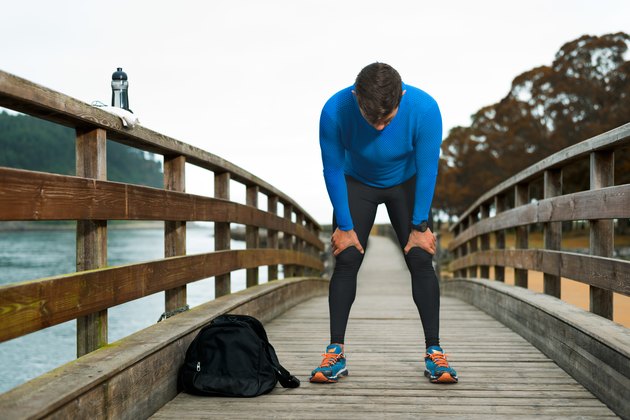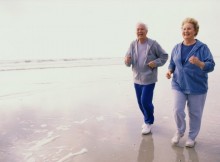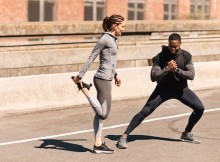7 Workout Injury Myths That Can Slow Your Recovery
Advertisements
Tell someone you are recovering from a sports injury and they are likely to advise. But how do you know what really helps you heal, what is just personal opinion or experience? Every body and every injury is different. What works for one person may not work for another.

Advertisements
fallacy 2: do stretching before exercise
static stretching before exercise was once considered as the key to prevent injury. However, static stretching not only doesn't prepare your body for exercise, it can damage your performance. A study published in the Journal of strength and conditioned reflex research in 2013 found that static stretching before exercise can reduce the strength of the lower body. Tinell Heller, senior group training coordinator for lifelong sports, says you'd better do a functional warm-up. Not only does it make your heart beat, but more importantly, it prepares your joints and ligaments for future needs.
for example, if you are preparing a heavy dumbbell propeller, repeat the hand release push ups several times to get your wrist and shoulder joints ready to support the weight. Myth 3: if you have a back injury and feel a stabbing pain after your next training, please lie down and don't camp in bed. When you lie down, you basically close the abdominal muscles that keep your torso upright and stable. Without abdominal support, your back will take on more. Without the help of the abdomen, back pain will become more and more serious, said Alice Holland, a physical therapist at & quot; strong strong physical therapy. If the back pain is not fixed, move. Be sure to adjust the intensity of exercise according to comfort and ability. If the pain persists or worsens, consult your doctor or physical therapist. Myth 4: knee support gives you super power. Many people who have knee injury or weakness think that wearing knee support during exercise can prevent further injury. In fact, support has almost no sense of security, just a false sense of security. Holland likens support to scaffolding on buildings: if someone throws stones at a building, it may help, but it doesn't prevent the building from collapsing, she said. Don't rely on braces. Exercise with care. Make time for your rehabilitation kit because it can help you relieve pain and joint instability. Myth 5: if you feel pain, when you wake up the next day after a hard exercise, take a day off. This is a phenomenon called delayed muscle soreness (DOMS), which gives you the chance to lie on the sofa freely. Day. Although rest days are essential for the normal recovery of muscles, Heller said that not exercising will only slow your recovery and make you feel pain for a longer time. Continuous DOM can also lead to compensation in other aspects, resulting in muscle imbalance and potential injury. For a more stable recovery, take an active rest day: walk, go to yoga classes, or use foam rollers on your muscles to reduce lactic acid buildup.
Advertisements
fallacy 6: the right shoes can prevent all kinds of injuries But a good shoe can win 39 pounds without covering up any previous weaknesses. &It's not the shoes that hurt the athletes, Holland said. &This is because athletes lack exercise in their sneakers, which is the cause of injuries. By visiting the running store for gait analysis, find the right shoes for your size, running style and preference. Myth 7 If you don't feel pain, you'd better go to
it's a familiar scenario: you get hurt, work with a physical therapist, and then return to regular exercise when the pain goes away. Soon after, the damage will happen again. According to Holland, it's not uncommon for athletes, especially those recovering from surgery, to re engage in sports before they have time for their bodies to recover. Your tissue may heal, but your muscles need time to rebuild.
just like you should be 39, don't go straight from couch potato to super marathon without playing 5K first, you should not exceed 39; don't expect to leave the place before you are injured, and don't need to rebuild a solid foundation first.




